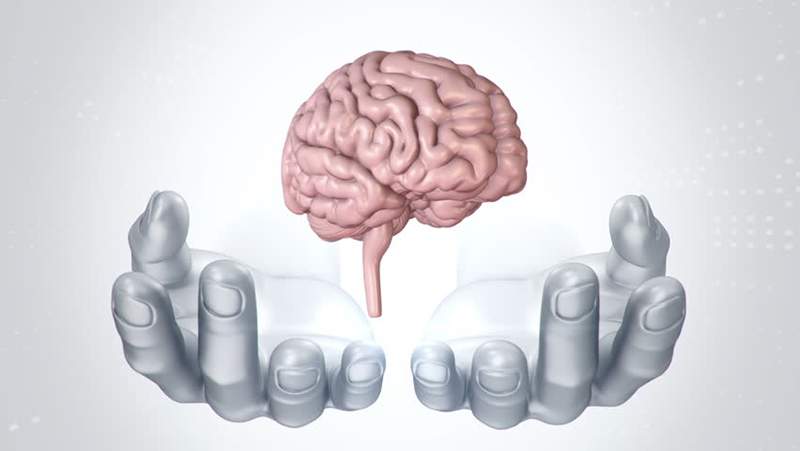The Hand Syndrome (SMA)

- 1249
- 154
- Hugh Greenholt
The alien -hand syndrome (SMA) is a neurological disorder that implies a complex motor activity, the person has the feeling that one of his hands has “his own will” or that acts autonomously, because he loses control over it and executes movements involuntary, like use behaviors and exploratory reflexes, It is an unusual condition among the population.
The affected hand can hold objects, people and in a few cases, you can try to attack the patient.
Sometimes, the person with SMA can have intermittent voluntary control over the affected member, other times, due to the intermanual conflict, the hands can rival each other, interfering with the movements execution decisions, for example: the affected member can take a Object, while the person's will does, he can try to make the other hand leave the object in place.
This condition is also known as the strange hand syndrome, alien hand, anarchic hand or dr. Strangelove.
Content
Toggle- Etiology
- SMA: Clinical classification and subtypes
- SMA treatment
- References
Etiology
The etiology includes various conditions such as brain tumors, aneurysms, infections, a stroke or hemorrhagic or ischemic stroke, sequelae of neurosurgery, surgery of the corpus callosum, brain lesions in: anterior cingulated cortex, thalamus, supplementary motor area, frontomedial cortex, frontomedial cortex, front -front cortex , Calloso body and/or posterior parietal cortex, in these patients isolated activation of the contralateral primary motor cortex. It can also be due to neurodegenerative diseases such as Alzheimer's, disease of oblivion.
The parietal lobe contains the body scheme, intervenes both in spatial perception and in "topography", lesions in the parietal cortex can cause heminegligence and lack of awareness about the movements made, due to the Loss of proprioceptive feedback, Well, through it, the brain receives information about the position with respect to our environment, forming a pattern of the State and the location, with said neurological feedback, the brain orders the execution of precise movements, while having damage, they can manifest themselves spontaneous movements, without the will of the person.
SMA: Clinical classification and subtypes
| Hand Syndrome SMA CLINICAL SIGNS | |
| Alien hand | Strange behavior of a hand or non -cooperative, the term is used as the name of the syndrome with all its components. The patient has a subjective feeling that the hand is not the own. |
| Posterior strange hand | Characterized by levitation of hand and abnormal postures. |
| Aberrant motor behavior of the alien hand or kinetic apraxias: to. Magnetic Apraxia: Reflect forced pressure. b. Repellent apraxia: With the release of avoidance responses. | Abnormal behavior of holding or avoiding. |
| Compulsive manipulation of objects | The affected hand tends to manipulate objects against the person's will. |
| Anarchic hand | Autonomous behavior of a limb without denial. The affected hand performs an activity aimed at an objective that does not undergo the person's will. |
| Subjective reaction | Feeling of not recognizing the affected hand as its own limb. |
| Interhemispheric self -criticism | They express amazement at the behaviors executed by the affected hand. |
| Manual interaction/ Diagnostic Dispraxia | Conflict between the desired act and the act executed by the affected hand. |
| Intermanual conflict | The hands act for crossed purposes with each other. One hand performs actions contrary to the other. |
| Agonistic Dispraxia | Automatic and compulsive execution of orders by one of the hands when the patient is asked to perform the movement with the other hand. |
| Supernumerary hand | The person has the feeling of having an additional limb. |
There is a subtype known as "the hand that levita", in which the affected limb "Levite" without the action being voluntary, these patients have important sensory deterioration.
Anatomically, the alien syndrome (SMA) can be classified as:
- Frontal. It is the most common, it can be the result of damage to: cingular turn, supplementary motor area, anterior part of the callosum of dominant hemisphere or the prefrontal cortex. It manifests itself in the dominant hand through Use and autestriction behaviors. Likewise, there is an increase in primary reflexes:
- GRASPING: hold objects, it is difficult for them to release them and close hand.
- Groping: Compulsive manipulation of objects.
- Callous: Apraxia is presented in the non -dominant member or intermanual conflict.
- Later: There is damage in cortical and subcortical posterior areas, they manifest in turn, sensitive effects such as: left heminegligence, left homonym hemianopy or left hemianesthesia. This subtype, is the one that is presented less frequently.
 Kegel exercises for women, what are, benefits and how to make them
Kegel exercises for women, what are, benefits and how to make them SMA treatment
The signs and symptoms that people with others' hand -hand syndrome (SMA) manifest do not disappear completely despite taking treatment. It has been observed that anxiety and fatigue They can exacerbate involuntary movements, So it is recommended that the patient learn strategies to handle stress and relaxation. Cognitive-behavioral therapy (TCC) can be of great help, as well as viso-spatial training and occupational therapy.
People with others' hand syndrome (SMA) can learn through rehabilitation programs and strategies to maintain their attention, such as sustaining an object with the affected hand, trying to reduce the manifestation of involuntary movements. Some effects of the condition can be controlled with botulinum toxin (Botox) together with neuromuscular blockers, they result as muscle control therapy.
References
- https: // www.NCBI.NLM.NIH.GOV/PMC/ARTICLES/PMC4059570/
- https: // Irenea.is/blog-dano-cerebral/syndrome-man-adjusting/
- https: // jamanetwork.com/Journals/Jamaneurology/article-abstract/785322

